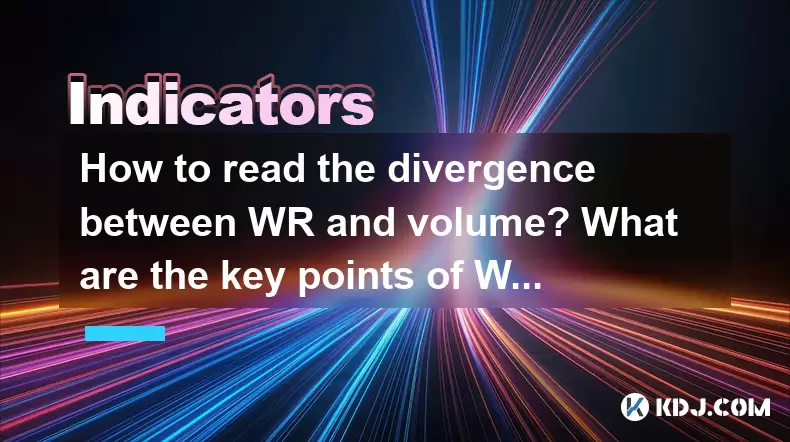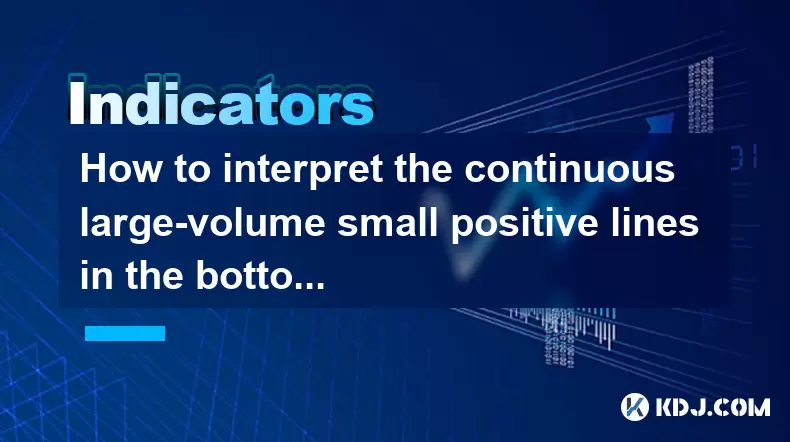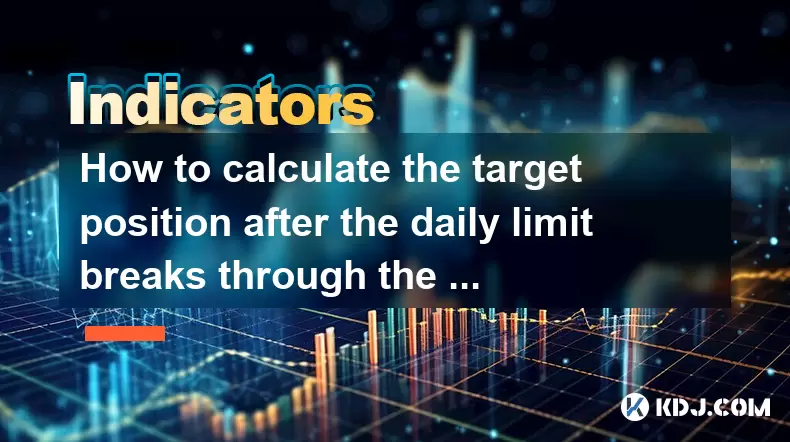-
 Bitcoin
Bitcoin $101,898.5005
-0.75% -
 Ethereum
Ethereum $2,258.1125
-1.07% -
 Tether USDt
Tether USDt $1.0004
0.01% -
 XRP
XRP $2.0178
-2.93% -
 BNB
BNB $624.0243
-1.53% -
 Solana
Solana $134.3298
-0.90% -
 USDC
USDC $0.9999
0.01% -
 TRON
TRON $0.2675
-2.05% -
 Dogecoin
Dogecoin $0.1538
-1.96% -
 Cardano
Cardano $0.5482
-1.11% -
 Hyperliquid
Hyperliquid $35.5636
5.45% -
 Bitcoin Cash
Bitcoin Cash $453.4902
-1.66% -
 Sui
Sui $2.5134
-2.97% -
 UNUS SED LEO
UNUS SED LEO $9.1292
1.77% -
 Chainlink
Chainlink $11.8457
-1.60% -
 Stellar
Stellar $0.2312
-2.73% -
 Avalanche
Avalanche $16.9721
0.29% -
 Toncoin
Toncoin $2.7549
-3.82% -
 Shiba Inu
Shiba Inu $0.0...01081
-1.10% -
 Litecoin
Litecoin $80.8250
-0.71% -
 Hedera
Hedera $0.1374
0.21% -
 Monero
Monero $305.4827
-2.36% -
 Ethena USDe
Ethena USDe $1.0006
0.00% -
 Dai
Dai $1.0000
-0.01% -
 Polkadot
Polkadot $3.2085
-3.12% -
 Bitget Token
Bitget Token $4.0845
-3.13% -
 Uniswap
Uniswap $6.3353
-1.63% -
 Pi
Pi $0.5085
-0.70% -
 Pepe
Pepe $0.0...08913
-3.82% -
 Aave
Aave $232.7090
-0.58%
How to read the divergence between WR and volume? What are the key points of WR volume-price coordination?
Traders can use WR and volume divergence to spot potential market reversals, entering long positions on bullish signals and exiting on bearish ones.
May 24, 2025 at 08:15 am

Understanding the divergence between the Williams %R (WR) indicator and volume is crucial for traders looking to gain insights into potential market reversals or continuations. The Williams %R is a momentum indicator that measures overbought and oversold levels, while volume represents the number of shares or contracts traded in a security or market during a given period. By analyzing the relationship between these two metrics, traders can make more informed decisions.
What is Williams %R and How Does it Work?
Williams %R, developed by Larry Williams, is a technical indicator used to identify overbought and oversold levels. It is a type of oscillator that fluctuates between 0 and -100. The formula for calculating Williams %R is as follows:
[ \text{WR} = \frac{\text{Highest High} - \text{Close}}{\text{Highest High} - \text{Lowest Low}} \times -100 ]
Where:
- Highest High is the highest price in the look-back period.
- Lowest Low is the lowest price in the look-back period.
- Close is the closing price of the current period.
Typically, a WR reading above -20 indicates an overbought condition, suggesting a potential price decline. Conversely, a WR reading below -80 indicates an oversold condition, suggesting a potential price increase. Traders often use these thresholds to anticipate market movements.
Understanding Volume and Its Importance
Volume is a measure of how much of a given financial asset has been traded in a specific period. It is an essential tool for traders as it provides insights into the strength of a price move. High volume during a price increase suggests strong buying interest, while high volume during a price decrease indicates strong selling pressure.
In the context of trading, volume can confirm or contradict price movements. For instance, if the price of a cryptocurrency rises on high volume, it is a bullish sign. Conversely, if the price rises on low volume, it might indicate a lack of conviction among buyers, potentially signaling a false breakout.
Divergence Between WR and Volume
Divergence occurs when the price of an asset moves in the opposite direction of an indicator. In the case of WR and volume, divergence can be a powerful signal for traders. There are two main types of divergence to consider:
Bullish Divergence: This occurs when the price of the cryptocurrency is making lower lows, but the WR indicator is making higher lows. If this divergence is accompanied by increasing volume, it suggests that the selling pressure is weakening, and a potential bullish reversal might be imminent.
Bearish Divergence: This occurs when the price is making higher highs, but the WR indicator is making lower highs. If this divergence is accompanied by increasing volume, it suggests that the buying pressure is weakening, and a potential bearish reversal might be imminent.
Key Points of WR Volume-Price Coordination
WR volume-price coordination refers to the alignment between the Williams %R indicator, volume, and price movements. Understanding this coordination can help traders make better trading decisions. Here are some key points to consider:
Confirmation of Trends: When the WR indicator moves in the same direction as the price and volume, it confirms the current trend. For instance, if the price is rising, the WR is moving away from oversold levels, and the volume is increasing, it confirms a bullish trend.
Reversal Signals: Divergences between WR and volume can signal potential reversals. For example, if the price is making new highs, but the WR is showing overbought conditions and the volume is decreasing, it may signal a bearish reversal.
Overbought/Oversold Conditions: When the WR reaches extreme levels (above -20 or below -80), and the volume is high, it can indicate a strong overbought or oversold condition. Traders should watch for these signals to anticipate potential price reversals.
How to Read WR and Volume Divergence
To effectively read the divergence between WR and volume, traders should follow these steps:
Identify the Trend: Start by identifying the current trend in the price of the cryptocurrency. Is it in an uptrend, downtrend, or ranging?
Analyze WR Readings: Look at the WR indicator to see if it is in overbought or oversold territory. Pay attention to the thresholds of -20 and -80.
Check Volume: Examine the volume during the price movements. Is the volume increasing or decreasing? High volume can confirm the strength of a move, while low volume might indicate a lack of conviction.
Spot Divergence: Look for divergences between the price and the WR indicator. If the price is making new highs or lows, but the WR is doing the opposite, a divergence is present.
Combine with Volume: Confirm the divergence with volume. If the divergence is accompanied by increasing volume, it strengthens the signal of a potential reversal.
Practical Example of WR and Volume Divergence
To illustrate how to read WR and volume divergence, consider the following example:
- Scenario: The price of a cryptocurrency is making lower lows, indicating a downtrend.
- WR Indicator: The WR indicator is making higher lows, suggesting that the selling pressure is weakening.
- Volume: The volume is increasing as the price makes lower lows.
In this scenario, there is a bullish divergence between the price and the WR indicator. The increasing volume confirms that the selling pressure is diminishing, and a potential bullish reversal might be on the horizon. Traders should watch for a confirmation of this reversal, such as a bullish candlestick pattern or a break above a key resistance level.
Using WR and Volume for Trading Decisions
Traders can use the insights gained from WR and volume divergence to make more informed trading decisions. Here are some practical ways to apply this knowledge:
Entry Points: Use bullish divergence as a signal to enter long positions. For instance, if the price is making lower lows, but the WR is making higher lows and the volume is increasing, consider entering a long position.
Exit Points: Use bearish divergence as a signal to exit long positions or enter short positions. If the price is making higher highs, but the WR is making lower highs and the volume is increasing, consider exiting long positions or entering short positions.
Stop-Loss and Take-Profit Levels: Set stop-loss and take-profit levels based on the WR and volume signals. For example, if entering a long position based on bullish divergence, set a stop-loss below the recent low and a take-profit at a resistance level.
Frequently Asked Questions
Q1: Can WR and volume divergence be used for all timeframes?
Yes, WR and volume divergence can be used across various timeframes, from intraday charts to weekly or monthly charts. However, the effectiveness of the signals may vary depending on the timeframe. Shorter timeframes might produce more false signals, while longer timeframes may provide more reliable signals.
Q2: How often should I check for WR and volume divergence?
It depends on your trading strategy and timeframe. For day traders, checking WR and volume divergence multiple times a day might be necessary. For swing traders or long-term investors, checking daily or weekly might be sufficient. The key is to be consistent and monitor the indicators regularly.
Q3: Are there other indicators that can be used in conjunction with WR and volume?
Yes, other indicators can complement WR and volume analysis. Popular choices include the Relative Strength Index (RSI), Moving Average Convergence Divergence (MACD), and Bollinger Bands. Combining these indicators can provide a more comprehensive view of market conditions and enhance trading decisions.
Q4: How can I avoid false signals when using WR and volume divergence?
To avoid false signals, consider the following strategies:
- Wait for Confirmation: Do not act on a divergence signal immediately. Wait for additional confirmation, such as a breakout from a key level or a candlestick pattern.
- Use Multiple Timeframes: Analyze the divergence across different timeframes to increase the reliability of the signal.
- Combine with Other Indicators: Use other technical indicators to validate the divergence signal. If multiple indicators align, the signal is more likely to be valid.
Disclaimer:info@kdj.com
The information provided is not trading advice. kdj.com does not assume any responsibility for any investments made based on the information provided in this article. Cryptocurrencies are highly volatile and it is highly recommended that you invest with caution after thorough research!
If you believe that the content used on this website infringes your copyright, please contact us immediately (info@kdj.com) and we will delete it promptly.
- XRP Rally Meets Neo Pepe Presale: A Meme Coin Revolution?
- 2025-06-23 17:05:13
- Coin-Op Comeback: Arcade Bars, Stern, and a Director's New Venture
- 2025-06-23 16:45:12
- XRP in Japan: From Community Day Tacos to Payment Sector Transformation
- 2025-06-23 17:05:13
- LILPEPE Presale Frenzy: The Meme Coin Revolution is Here, Ya'll!
- 2025-06-23 16:45:12
- Bitcoin Crash Incoming? Kiyosaki Bets Big on Silver Amidst Global Uncertainty
- 2025-06-23 17:25:11
- Dogecoin, Meme Coins, Price Prediction: Riding the Bullish Wave?
- 2025-06-23 17:25:11
Related knowledge

Is the high opening and low closing and huge volume the next day a trap for more?
Jun 23,2025 at 05:07pm
Understanding High Opening and Low Closing with Huge VolumeWhen traders observe a high opening followed by a low closing and massive volume the next day, it often raises concerns about whether this is a trap set by larger players in the market. This pattern typically indicates strong volatility within a short period, which can confuse retail investors. ...

How to interpret the MACD's second golden cross on the water but insufficient volume?
Jun 23,2025 at 05:01pm
Understanding the MACD Indicator and Its SignificanceThe Moving Average Convergence Divergence (MACD) is a widely used technical analysis tool in cryptocurrency trading. It helps traders identify potential buy or sell signals by showing the relationship between two moving averages of an asset’s price. The MACD line, signal line, and histogram are the th...

How much volume is required for the W-bottom to break through the neckline of the time-sharing chart?
Jun 23,2025 at 04:21pm
Understanding the W-Bottom Pattern in Cryptocurrency TradingThe W-bottom pattern is a popular technical analysis formation used by traders to identify potential bullish reversals. It typically appears at the end of a downtrend and resembles the letter 'W' on price charts. In the context of cryptocurrency trading, where volatility is high and trends shif...

How to interpret the continuous large-volume small positive lines in the bottom area?
Jun 23,2025 at 04:43pm
Understanding the Basics of 'Large-Volume Small Positive Lines'In technical analysis, especially within the cryptocurrency market, the pattern known as 'large-volume small positive lines' refers to a scenario where the price increases slightly (small positive candlestick) but is accompanied by unusually high trading volume. This phenomenon typically occ...

How to read the sideways consolidation after the bottom volume and long positive line?
Jun 23,2025 at 02:28pm
Understanding the Sideways ConsolidationWhen analyzing cryptocurrency charts, sidewards consolidation refers to a phase where prices move within a narrow range without a clear upward or downward trend. This pattern often appears after significant price movements, such as a sharp increase followed by a period of equilibrium between buyers and sellers. In...

How to calculate the target position after the daily limit breaks through the previous high?
Jun 23,2025 at 02:57pm
Understanding the Daily Limit BreakthroughIn cryptocurrency trading, a daily limit typically refers to the maximum price movement allowed within a single trading day on certain exchanges. When this limit is breached, especially when it surpasses the previous high, traders often seek to calculate the target position or expected price movement following s...

Is the high opening and low closing and huge volume the next day a trap for more?
Jun 23,2025 at 05:07pm
Understanding High Opening and Low Closing with Huge VolumeWhen traders observe a high opening followed by a low closing and massive volume the next day, it often raises concerns about whether this is a trap set by larger players in the market. This pattern typically indicates strong volatility within a short period, which can confuse retail investors. ...

How to interpret the MACD's second golden cross on the water but insufficient volume?
Jun 23,2025 at 05:01pm
Understanding the MACD Indicator and Its SignificanceThe Moving Average Convergence Divergence (MACD) is a widely used technical analysis tool in cryptocurrency trading. It helps traders identify potential buy or sell signals by showing the relationship between two moving averages of an asset’s price. The MACD line, signal line, and histogram are the th...

How much volume is required for the W-bottom to break through the neckline of the time-sharing chart?
Jun 23,2025 at 04:21pm
Understanding the W-Bottom Pattern in Cryptocurrency TradingThe W-bottom pattern is a popular technical analysis formation used by traders to identify potential bullish reversals. It typically appears at the end of a downtrend and resembles the letter 'W' on price charts. In the context of cryptocurrency trading, where volatility is high and trends shif...

How to interpret the continuous large-volume small positive lines in the bottom area?
Jun 23,2025 at 04:43pm
Understanding the Basics of 'Large-Volume Small Positive Lines'In technical analysis, especially within the cryptocurrency market, the pattern known as 'large-volume small positive lines' refers to a scenario where the price increases slightly (small positive candlestick) but is accompanied by unusually high trading volume. This phenomenon typically occ...

How to read the sideways consolidation after the bottom volume and long positive line?
Jun 23,2025 at 02:28pm
Understanding the Sideways ConsolidationWhen analyzing cryptocurrency charts, sidewards consolidation refers to a phase where prices move within a narrow range without a clear upward or downward trend. This pattern often appears after significant price movements, such as a sharp increase followed by a period of equilibrium between buyers and sellers. In...

How to calculate the target position after the daily limit breaks through the previous high?
Jun 23,2025 at 02:57pm
Understanding the Daily Limit BreakthroughIn cryptocurrency trading, a daily limit typically refers to the maximum price movement allowed within a single trading day on certain exchanges. When this limit is breached, especially when it surpasses the previous high, traders often seek to calculate the target position or expected price movement following s...
See all articles
























































































